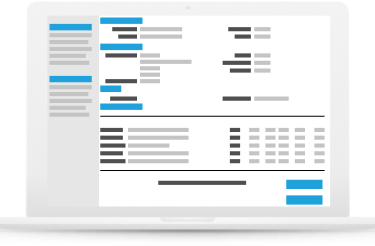What is a Flat File?
A flat file, also known as a text database, is a type of database that stores data in a plain text format. Flat file databases were developed and implemented in the early 1970s by IBM.
Flat files typically text files that have all word processing and structure markup removed. A flat file features a table with a single record per line. The different columns in a record use a tab or comma to delimit the fields. The flat file database does not have multiple tables, unlike in a relational database. The information contained in flat files does not have associated paths or folders.
All the records are stored in one place, and the database can be set up with a number of standard office applications. The database is easy to understand, and it is easy to sort the records. Records can also be viewed or extracted with simple criteria.
How are Flat Files Used?
Data warehousing projects use flat files to import data. There is no data manipulation performed on the stored data, but they are the preferred option because of how easily they carry information from the server. Flat files are a bare means of storing table data but do not hold relations between the tables within them.
Programmers use flat file databases when building applications. Their simple structure means they take up less space than structured files. The tradeoff is that information in the flat files can only be read, stored, and sent. Data representation in this kind of database complies with certain standards.
Each column in a flat file database is restricted to a specific data type. The delimiters are used to keep the data formatting at a fixed width, and to make it easier to find different fields within a record.
The first row in a flat file refers to the field name – which makes it easier to determine what data is dealt with in each field. All the rows in the flat file database follow the tuple concept in relational algebra, where tuples are an ordered list of elements.
Data in flat files remains in its original form until it is transferred into a staging area in a warehouse or a database management system. After the transmission is complete, the data is altered and saved in different forms.
Linux, Windows, and Macintosh operating systems run on a series of flat file databases. It’s also easy to use flat file databases to store customer lists and business contacts. But, if you have more than a few thousand records, they can have some disadvantages. They can be harder to update, contain non-unique records, have increased potential for duplication, and over time, can become inefficient.
“Text databases are easier to understand and setup than traditional databases. However, they may be inadequate for programs that are used frequently or contain millions of entries.”
Flat File vs. Relational Database
Flat file databases store data in a single table structure, where a relational database uses multiple table structures. In a relational database, it’s possible to cross-reference records between tables. Tables in both types of databases organize the records in rows, and each column contains a single piece of data in the record. Relational databases use indexes to find records quickly based on search criteria.
Types of Flat Files
There’s no clear answer in regard to whether it’s acceptable to include markings like line breaks in a flat file. Many of them call a Microsoft Word document that has been saved as a plain text file. The resulting file contains lines of text of a certain uniform length, or records, but no information that a program could use to format the document.
The application, however, must have knowledge of how the data is organized within the file. Using a structured query language (SQL) instead of a collection of files in a file system, users or applications won’t need to understand the location and data layout.
One of the most common flat files is a comma-separated value (CSV) file. CSV files are files where table data is gathered in lines of American Standard Code for Information Interchange (ASCII) text with the value of each table cell separated by a comma, with each row represented by a new line. CSV file represents relational data in a text file.
An example of a flat file is a spreadsheet that contains a list of vendors and their contact information. It contains a specific type of data and you can assign each vendor a unique ID.
PurchaseControl offers integrations with many programs your business already uses every day, such as QuickBooks, Sage 50, Sage 200, OneLogin, Okta, and others, to ensure you have integrated and streamlined workflows, much like running an ERP without the cost. And if you need integration with something else you use, PurchaseControl offers custom integration options using CSV exports to cover integrations with other software.
PurchaseControl uses flat file databases to make software integrations easy.
Find Out How








